Meet Craig Tracy: An Exclusive Interview with the Body-Painting Legend
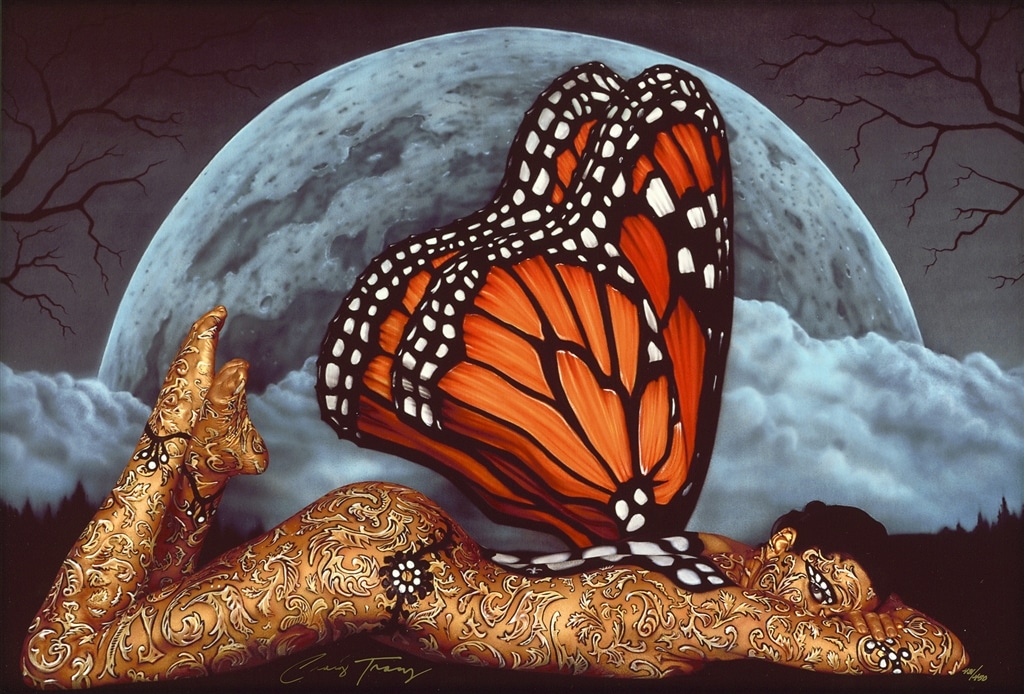
“Monarch” (2016)
Craig Tracy was never interested in conventional art. Though he trained for years as an illustrator, it wasn’t until he began experimenting with the ancient art of body-painting that he truly found his artistic medium.
Tracy brings everything from wild animals to fantasy worlds to life in his compositions as he ingeniously blends his meticulously painted bodies with intricately-designed backgrounds. The end result is breathtaking, elevating traditional body-painting into the realm of fine art.
Today, Tracy is one of the world’s best known and loved body-painting artists. His work is displayed in galleries all over the world, and he’s widely recognized as the “body-painting guru” on the popular reality series Skin Wars.
Recently, Tracy visited Park West Gallery and was kind enough to talk to us about his creative process, his techniques, and his opinions on body-painting, which the artist is quick to note is “the oldest form of painting in the world.” Enjoy!
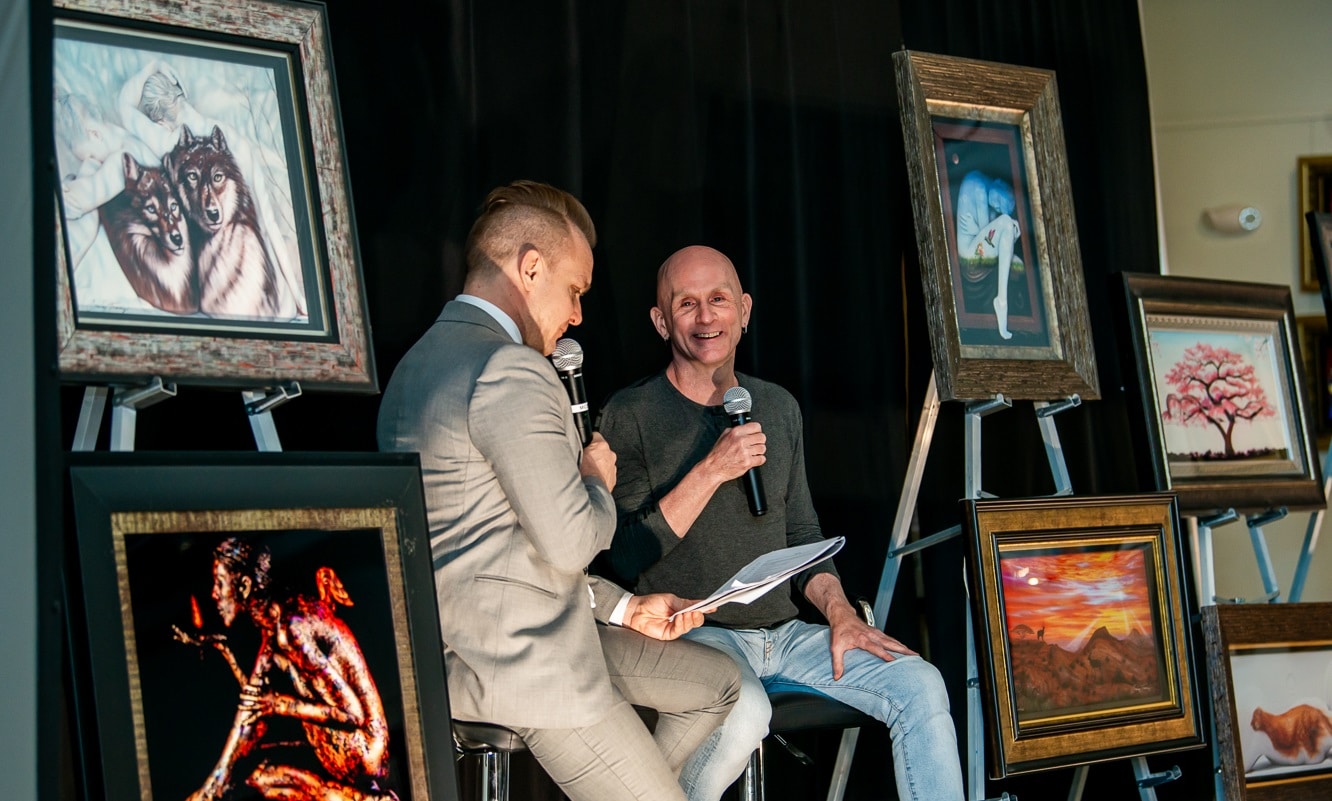
Craig Tracy talks in front of an audience at Park West Gallery in Miami.
How long have you been a body-painting artist?
I started creating artwork at the age of 15. I’ve been a professional artist for about 35 years and a professional body-painting artist for the last 18 years.
How do you start one of your compositions?
Occasionally, I’ll start with a concept, but I don’t allow myself to become restricted to a certain formula or structure.
A lot of the time, I will see patterns or shapes that spark a creative concept. My most recent painting was inspired by the pattern I noticed on a tie and, prior to that, a woman’s purse. I try to be as creative in the process as I am in the actual concept. Time is valuable and, to not waste it, I tend to figure out my work in advance. However, I do have a series of non-objective abstracts that are spontaneous.
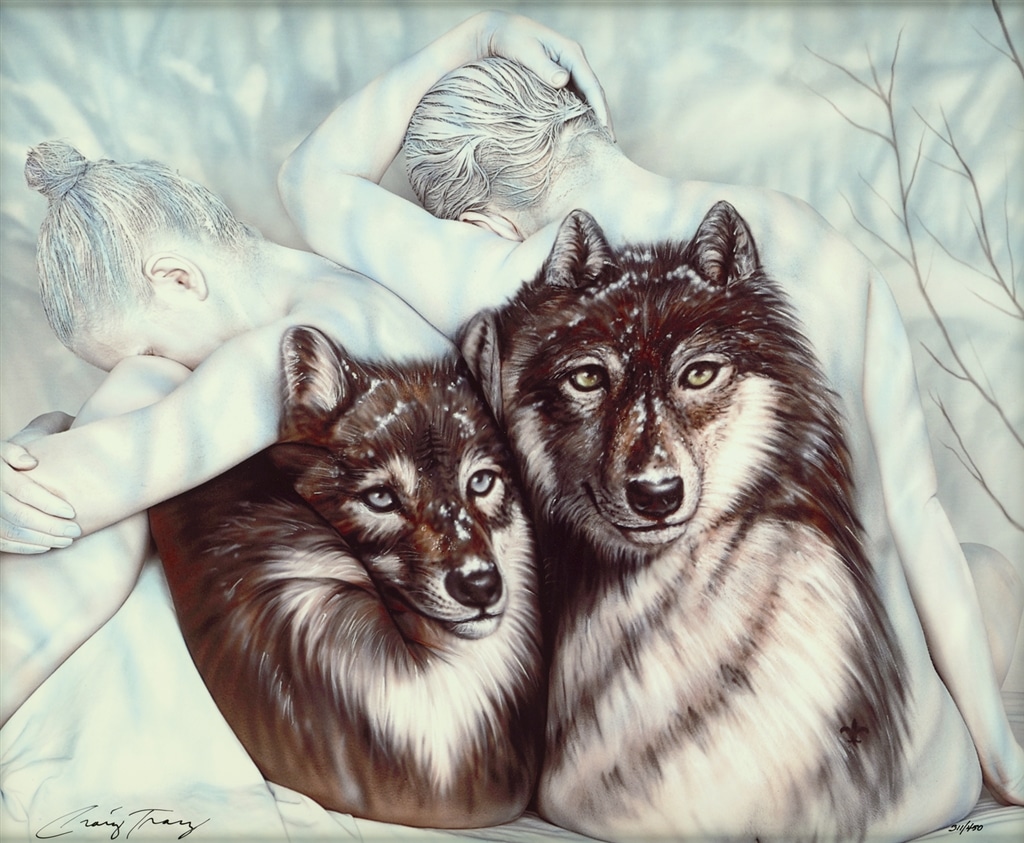
“Tandem” (2016)
How do you create the illusion of texture and depth when you’re painting on a human body?
All of the normal skills that apply to painting apply to body-painting. I use a lot of sponge techniques that brings in tremendous texture and have even created finger paintings on bodies.
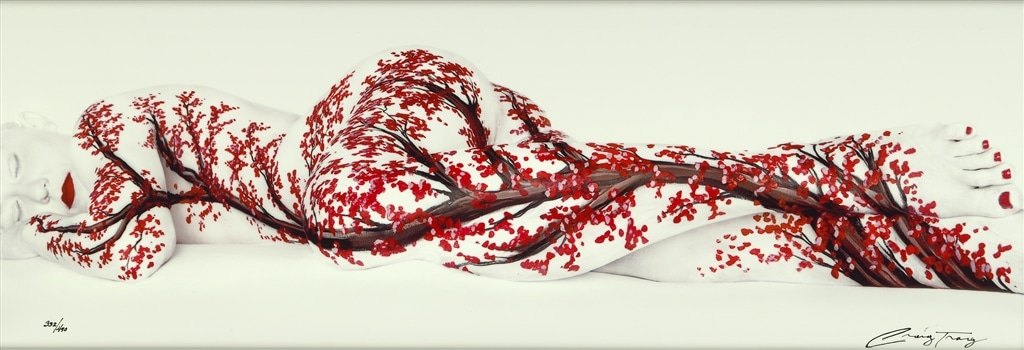
“Promise” (2016)
Does body type come into consideration when you’re creating a new design? For example, do certain compositions work better with a taller or shorter model?
It is important for the shape of a body to fit the concept, or the concept has to fit the shape. I am fortunate to be able to work with a substantial variety of bodies, and each one is a fresh canvas. For body-painting, curves and angles—whether in the hip, leg, back, etc.—are ideal and allow for a more abstract look.
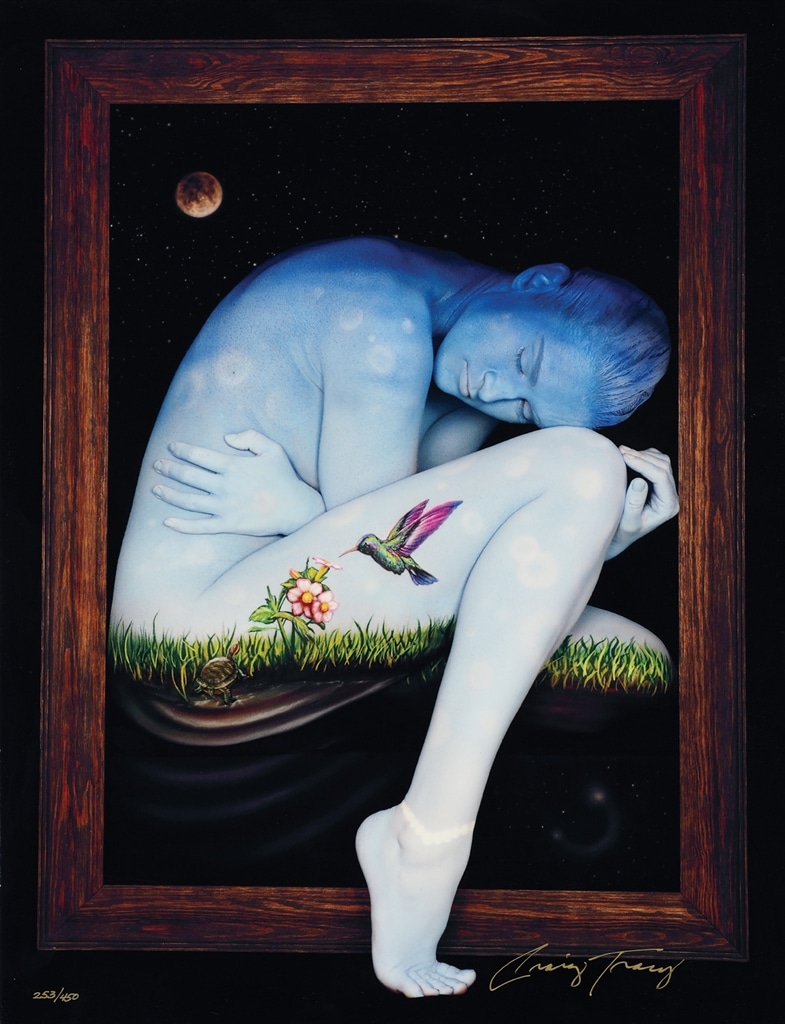
“Redemption” (2017)
With the advent of shows like Skin Wars, body-painting is becoming more and more popular. What’s one of the most common mistakes that an artist who is new to body-painting can make?
For young body-painters, they oftentimes allow the face to overwhelm the art. It is important to play a balancing act with body-painting, where you emphasize certain features and diminish others to understand the body language.
If you had the chance to talk to your 15-year-old self, right when you were starting out as an artist, what would you tell him?
I’d explain that the struggle in my 20s to really find who I was going to become is worth it.
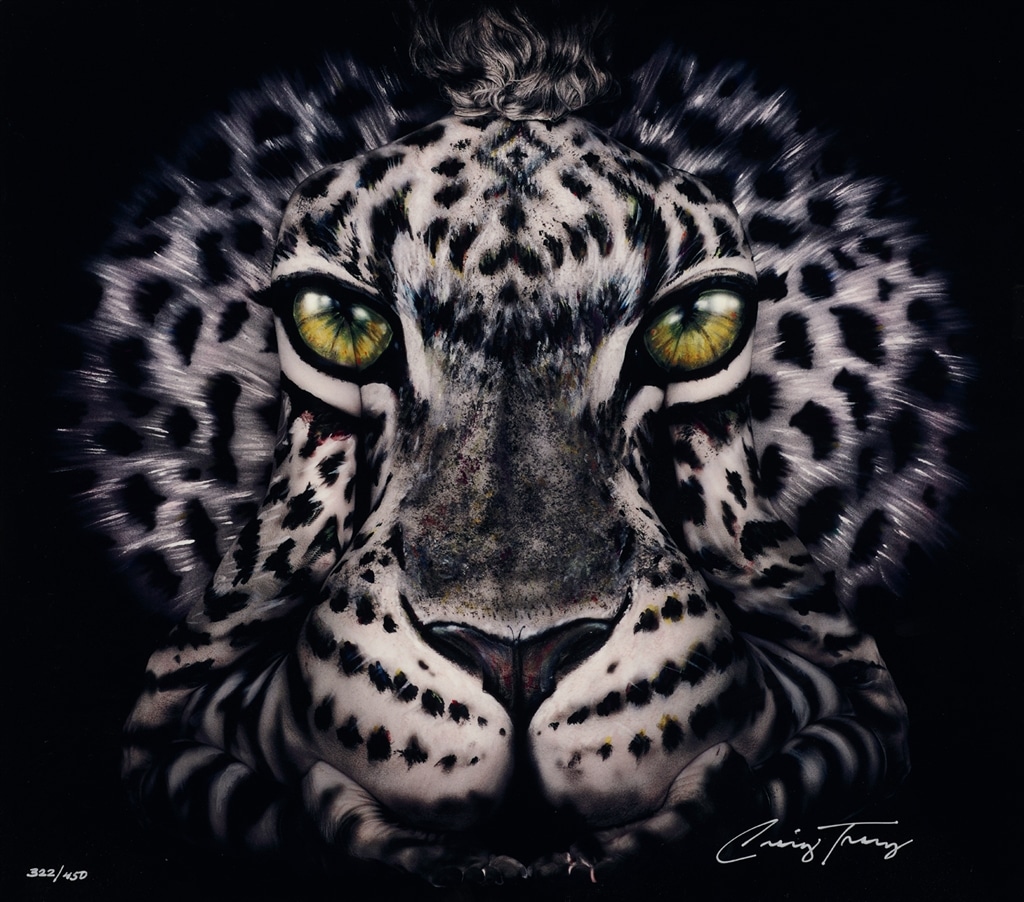
“Feral” (2017)
To collect the amazing art of Craig Tracy, contact our gallery consultants at (800) 521-9654 ext. 4 or sales@parkwestgallery.com.





